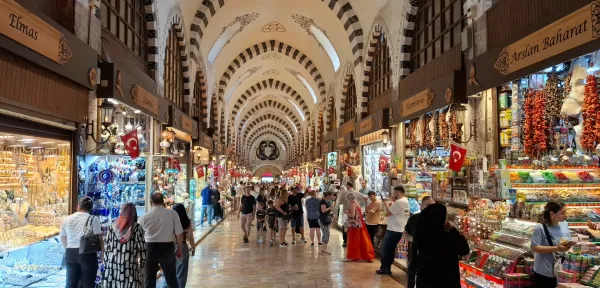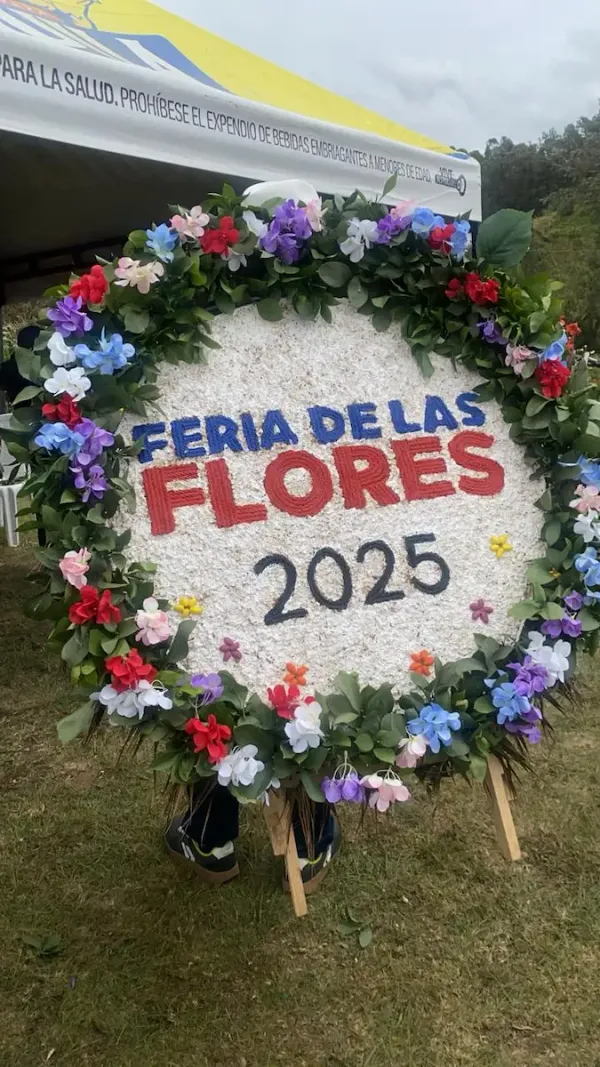Medellín Metro: Clean, Safe, and Reliable
A complete, no-BS guide to the Medellín Metro system—how to ride it, what to expect, and how to get from the airport to the cable cars without losing your mind (or your wallet).
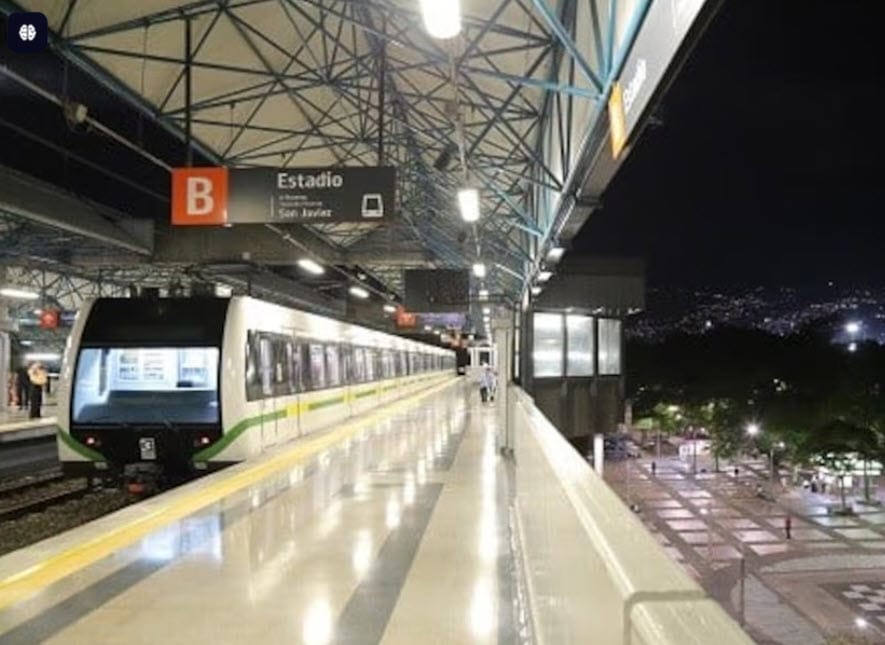
For more on navigating the sometimes confusing culture of Medellin, see my compreshensive guide to Medellin and the surrounding area in the Aburrá Valley.
Medellín’s metro is the backbone of the city’s transit system and one of the few rail-based systems in Colombia. It’s modern, safe, affordable, and—perhaps best of all—clean. Trains arrive every few minutes, and the system runs with impressive punctuality.
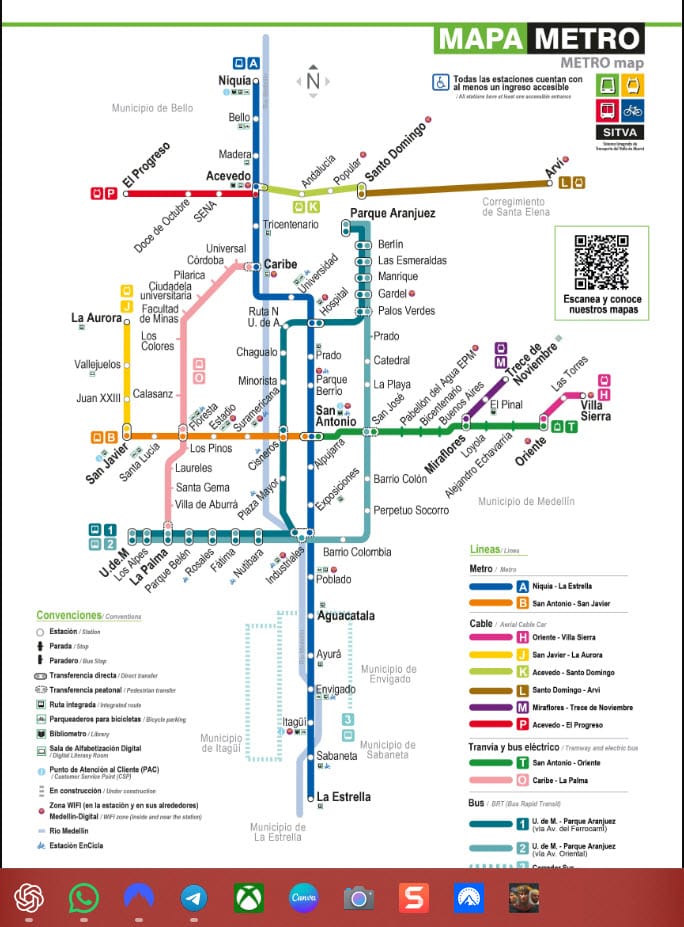
Metro Lines
-Line A (north–south): La Estrella ↔ Niquía (Bello)
-Line B (east–west): San Antonio ↔ San Javier
-Metrocable Lines (aerial cable cars): K, J, L, H, M
-Tranvía (streetcar): Line T-A
-Metroplús (BRT): Dedicated bus lanes integrated with metro stations
A single ride costs around 3,430 COP (≈ $0.85 USD), and transfers between lines are free with a Cívica card.

Everything You Need to Know Before Coming to Medellín
Cívica Cards: How to Ride Like a Local
You’ll need a Cívica card to access discounted fares and make seamless transfers. There are two types:
Cívica Eventual
A non-personalized card ideal for tourists and short-term visitors
-Costs ~10,900 COP, which is the price of the card itself
-Must be recharged with additional credit to cover ride fares
-Sold at any metro station ticket booth
-No ID required
-Valid on Metro, Metrocable, Metroplús, and integrated bus lines
-Does not offer fare discounts (e.g., for students or seniors)
Cívica Personal
-Free, but requires registration with valid ID (passport for foreigners)
-Offers discounted fares for students and seniors
-Grants access to the EnCicla public bike system
-Only available at these specific Puntos de Atención al Cliente (PAC):
--Niquía
--Acevedo
--San Antonio
--San Javier
--Itagüí
Metrocable: Scenic, Seamless, and Socially Transformative
The Metrocable system is Medellín’s most visually striking form of public transport. Built to connect hillside communities—many previously underserved by transit—it now serves both residents and tourists alike.

How It Works
Transfers from the Metro lines to the Metrocable lines happen within the same station, using your Cívica card. There’s no need to exit or re-enter: you simply walk to the cable car boarding area. For most routes, no extra fare is needed beyond your original Metro ride.
This makes the Metrocable system one of the most seamless and accessible transport options in Medellín. All transfer stations are well-signed and easy to navigate.

Transfer Stations
Acevedo Station – Transfer from Line A (train) to Line K (cable)
San Javier Station – Transfer from Line B (train) to Line J (cable)
Santo Domingo Station – Transfer from Line K (cable) to Line L (cable) to Arví
Popular Route: Parque Arví via Line L
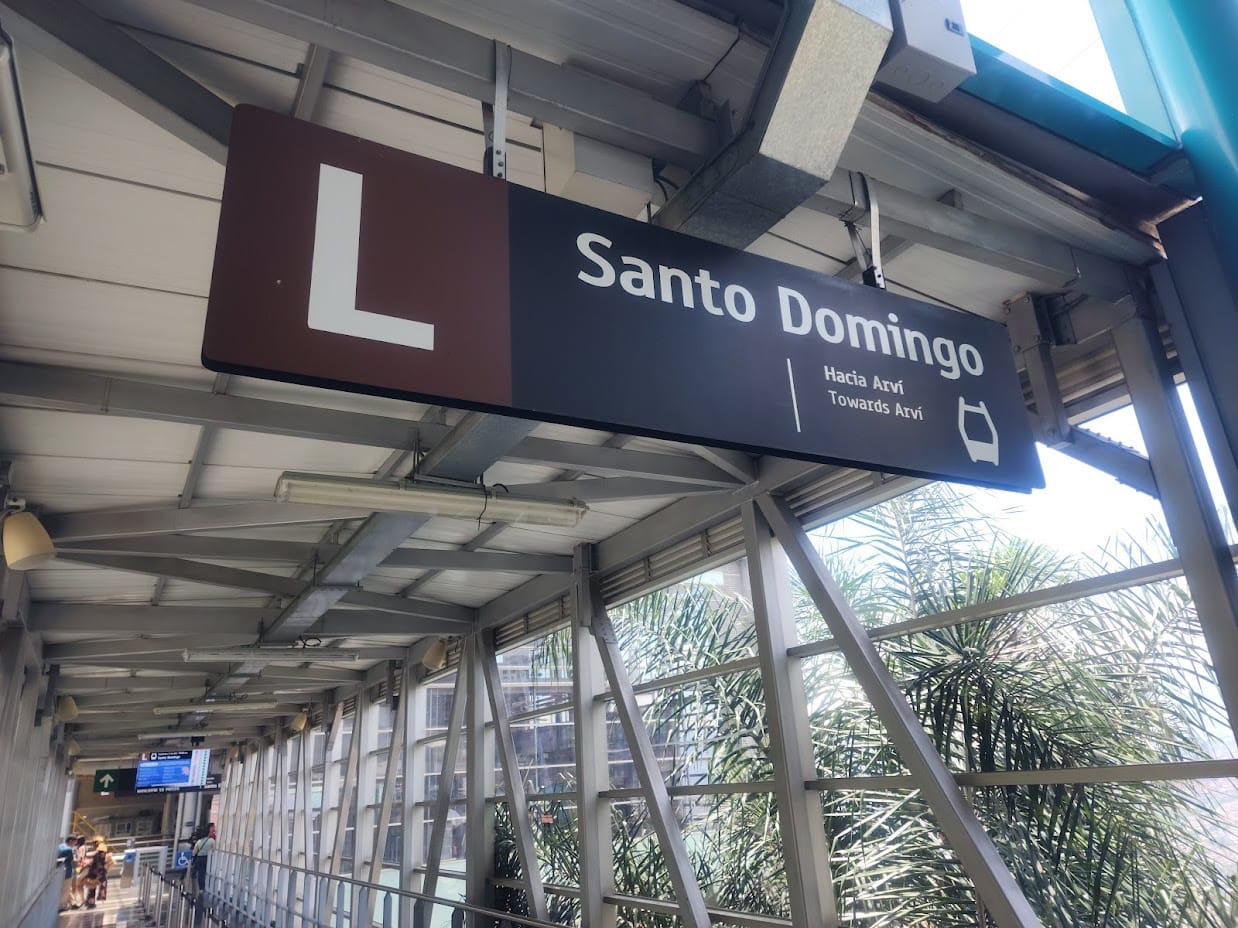
The most popular Metrocable destination for tourists is Parque Arví, a sprawling nature reserve in the mountains above the city. To get there:
-Take Line A to Acevedo
-Transfer to Line K toward Santo Domingo
-At Santo Domingo Station (served by Line K), transfer to Line L
🚨 Important: Line L requires a separate ticket that is not included in the standard Metro transfer system. You’ll need to buy it at a staffed ticket booth at Santo Domingo station before boarding the Line L cable car. This is the only place you can buy this ticket.
Expect scenic views during the ride to Arví—on a clear day, you can see nearly the entire Aburrá Valley. The journey from Acevedo to Santo Domingo in the cable car is about 9 minutes, and the journey from Santo Domingo to Arví is about 15 minutes, so the added fare is well worth the price for such an extended viewing time.
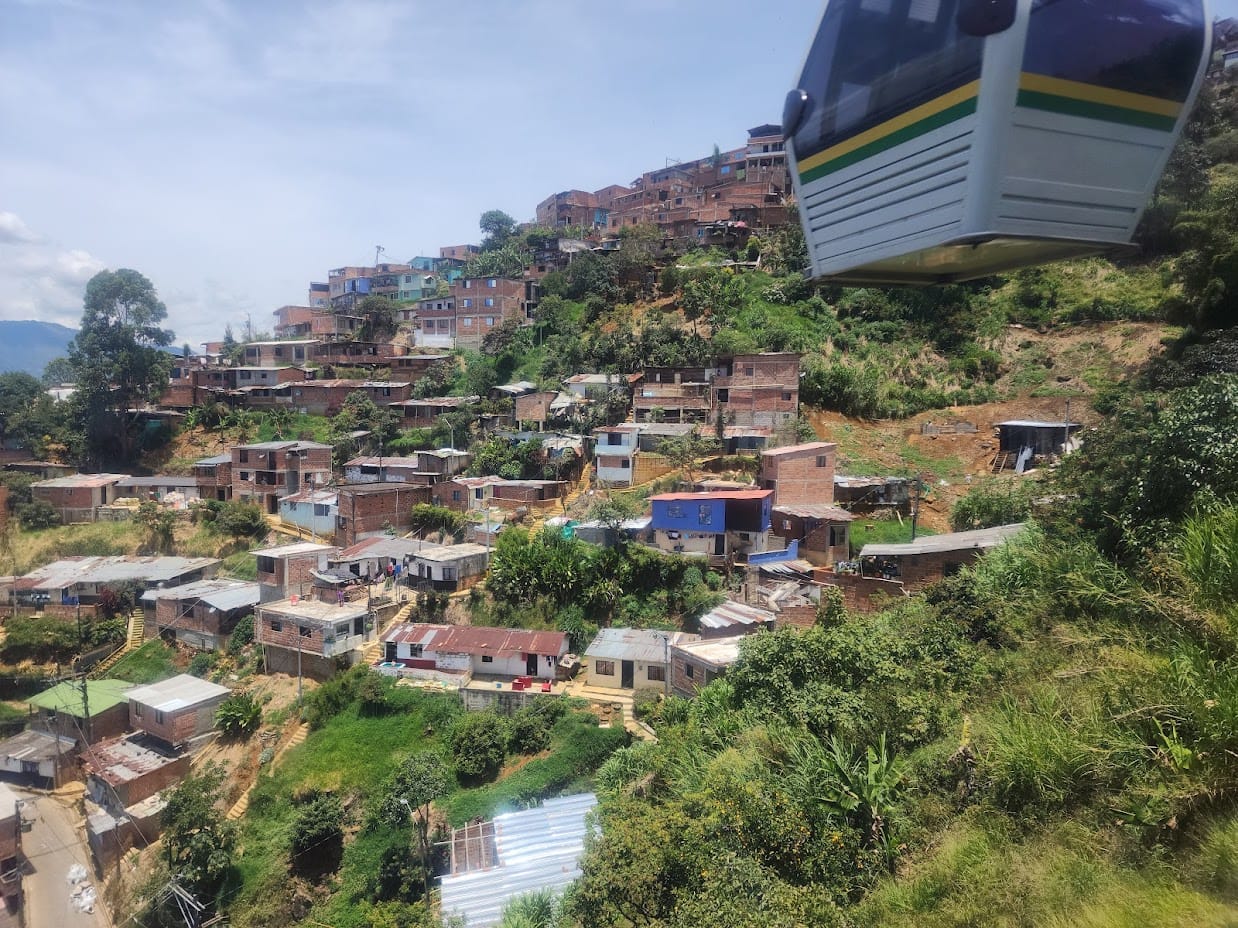
Line L is also popular with locals on weekends, so be prepared for longer lines during holidays.
A colectivo is a shared taxi—usually a white sedan or van—that travels fixed routes between the airport and the city. You don’t need to book in advance; just head to the designated transportation area outside the airport terminal where signs will mark where colectivos wait. Drivers typically wait until the car fills with passengers (usually 3–4) before departing. Fares are fixed (about 20,000–25,000 COP per person), and you pay the driver directly in cash. If you prefer not to wait, you can offer to pay for the empty seats to leave sooner.
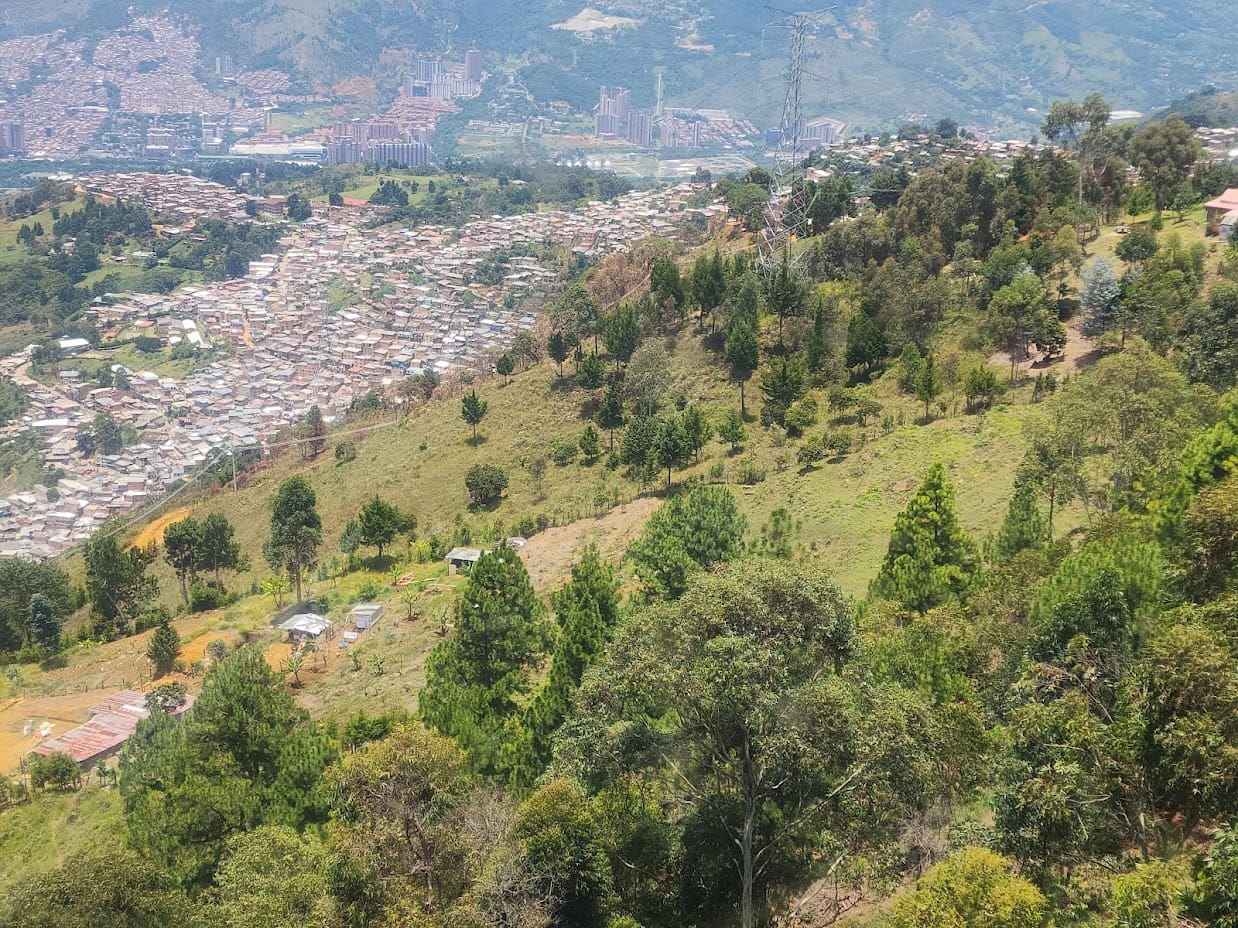
Getting to the Metro from the Airport
While Medellín’s main airport (José María Córdova International, MDE) isn’t directly connected to the metro system, you can reach it in under an hour using a combination of ground transport and the metro.
Step-by-Step: Airport to Metro
-After exiting customs, head outside to the transportation area. Look for the marked zone where airport buses and colectivos (shared taxis) wait. These are located just past the main exit and are clearly labeled.
-Board an official airport bus or shared colectivo heading to Medellín. These services typically stop at one of two key locations:
-San Diego Mall, which is a short walk from Exposiciones station on Line A
-Hotel Nutibara, which is close to Parque Berrío station on Line A
-Once dropped off in the city, walk to the nearby Metro station. There, you can either:
--Buy a Cívica Eventual card at the ticket booth (recommended for tourists)
--Or purchase a single-use ticket (note: these are not reloadable or reusable)
Use Line A to connect to nearly any destination in Medellín. From Exposiciones or Parque Berrío, the entire metro system is accessible.
These airport buses and colectivos run every 15–20 minutes, cost 10,500–20,000 COP, and are a reliable, affordable choice. They refer specifically to the buses and shared taxis departing from the airport to Medellín—not buses inside Exposiciones or other metro stations.
Metroplús and Integrated Bus Lines
The Metroplús system is Medellín’s version of Bus Rapid Transit (BRT), operating on dedicated lanes and linking key districts. While Metroplús buses are not always located directly inside metro stations, they typically have adjacent or nearby stops clearly marked for transfers. Transfers between the Metro and Metroplús are included with the Cívica card, and signage is usually clear.
Integrated buses serve neighborhoods and hillsides not covered by the main metro lines. These buses often depart from near metro stations but may require exiting the station to a connected terminal or street-level stop. They also accept Cívica cards and are part of the integrated fare system.
Signage and route information for these buses can sometimes be confusing, so using a mobile app like Moovit or Google Maps with transit directions is recommended.
Final Thoughts
Navigating Medellín by metro isn’t just doable—it’s enjoyable. With clean stations, reliable service, and connections that extend from the valley floor to the mountain peaks, the Metro system reflects the city’s ongoing transformation and civic pride. Whether you’re commuting to work, heading to a fútbol match, or just riding the Metrocable for the view, Medellín’s transit network offers a safe, affordable, and remarkably scenic way to get around.
Just remember: grab a Cívica card, keep your wits about you, and enjoy the ride. The city is literally at your feet—and a few pesos away.


